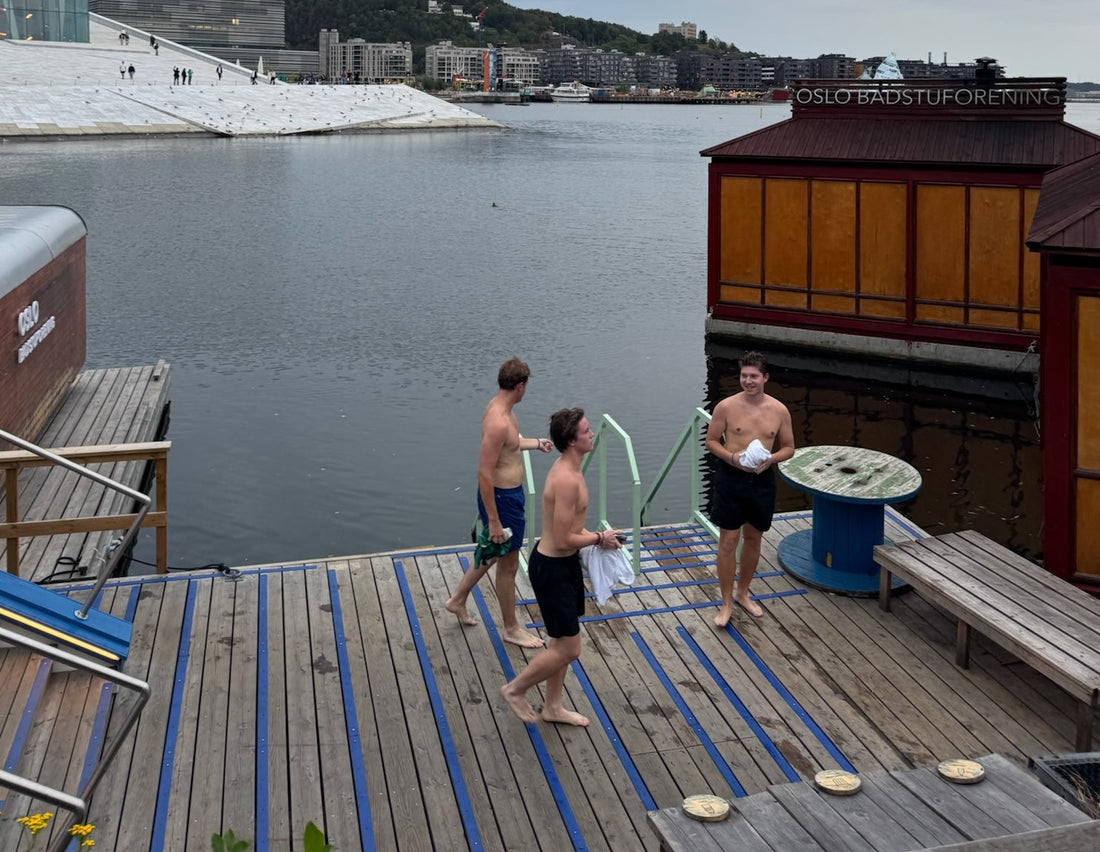
Are you always cold? I was like that too.
Share
Are you freezing from September to June, even in heated rooms, and like Zuza, our SM manager, you don't take off your coat during lectures? Or like me, you'd rather go to bed dirty than take a cold shower, and you can't even sleep without socks in the summer, and you only eat ice cream in 30-degree heat? Welcome to the club.
Some people have a harder time coping with low temperatures, reacting aggressively to the winter that drags on into March. They expend all their energy trying to stay warm, even as early as October. The cold robs them of the desire to go outside, as their bodies are less able to thermoregulate. Sometimes this indicates circulatory problems, hypothyroidism, less often other illnesses, or naturally lower brown fat activity. The good news is that there's often SOMETHING that can be done about it. In fact, quite a lot.

Wool, wool and more wool!
You can support impaired thermoregulation with appropriate clothing. Ideally, it should be made of natural, thermoactive fibers, and nothing beats wool . Sheep are masters at withstanding both very low and high temperatures. Their fur, technically called fleece, provides them with thermal comfort at -20°C (and also at plus 30°C! Yes, that's thermoregulation). Similarly, woolen layers of clothing will provide you with insulation from the cold. The best possible insulation, by simultaneously evaporating excess moisture and drying wet areas (i.e., the armpits) before bacteria and unpleasant odors develop. Credit goes to: the specific shape of wool fibers and lanolin. Synthetics can't do that – believe me!

But the real game changer is changing your attitude toward cold
Wearing warm, breathable, and quick-drying clothing is just a band-aid against the cold. If you're freezing because you have impaired thermoregulation, you might want to consider making some serious lifestyle changes!
Get yourself checked
First, rule out a medical cause. Check how your thyroid and circulatory system are functioning. Consult your results with a real doctor, not just a GPT chat ;-) I know it's simpler, but AI often doesn't know what it's talking about yet. If everything is within normal limits, try increasing your cold tolerance through cold resistance training.
Polar Marathon
Running has helped me immensely. I started running in the winter, which led to understanding that the body can warm itself; it just needs to be put into motion. My suffering lasts two minutes—that's all it takes for me to stop feeling cold, even when running in the freezing cold. Others translate it into kilometers—they say in Oslo, the first two kilometers are a struggle for thermal comfort, and the third kilometer is already pleasant. By the tenth kilometer, you experience pure bliss, and by the 20th, you want to move mountains… assuming you're a descendant of the Vikings, of course.
Overcoming internal resistance before going for a jog on a frosty or rainy morning is also important in this process, so winter running is both a physical and mental workout. Cardio, as the name suggests, is about strengthening our circulatory system, and its weakness can often lead to constant freezing. In short, winter running is a significant effort, but it also offers numerous benefits and unparalleled satisfaction. So yes, I encourage you to run, even in winter, if you haven't already. And here's a little tip: of course, running is best in woolen longsleeves .
Below is a photo from the POLAR NIGHT MARATHON - the race takes place above the Arctic Circle in Trømso www.msm.no.
Warming cold
Scandinavians claim they don't freeze because they're adapted to cold climates, but the truth is they do a lot to maintain their fitness and immunity. Koselig , the Norwegian way to capture your inner summer year-round, which I described in my previous post, involves, among other things, taming the cold and using it for therapeutic purposes.

It is known that hardening through sauna and winter swimming increases resistance to infections, body performance and supports metabolism and regenerative mechanisms. In Sweden, Finland, Norway, and Iceland, it's not just a hobby but part of a daily routine. The cold stimulates the immune system, while the heat helps relax muscles and cleanse the body.
And now some scientific facts: exposure to cold stimulates the nervous and immune systems. Cold causes blood vessels to constrict, which improves circulation and helps remove toxins. After leaving cold water and entering a warm sauna, blood vessels dilate, which increases blood flow and tissue oxygenation. This cyclical thermal therapy stimulates the immune system, increases endorphin production, and improves mood. Try it, and you'll see how much happier you'll be.
Brown ally
It's said that slim people get colder more easily, but that's a myth. It's true that adipose tissue plays a very important role in the body's heating process. But not all adipose tissue does. Regular white adipose tissue only stores energy, while brown adipose tissue is needed to produce heat. Interestingly, we're born with a significant supply of it. Newborns need it because they don't yet have the ability to warm up through movement or shivering, and it's their only protection against freezing. It disappears with age, and to regain it, we need to expose ourselves to cold, as it most effectively stimulates its development. Therefore, winter swimming and sauna bathing actually translate into better long-term tolerance of cold. Studies show that people with higher levels of brown adipose tissue generally have better metabolic rates and are more resistant to lifestyle diseases such as cancer.
The lesson from all this is that we can use the cold to our advantage. To stop constantly freezing, we have to go out into the cold. The hardest are those first two minutes, the first two kilometers, the first dip in icy water. But if you dare, your life, especially in winter, will change for the better! And maybe we'll meet in Trømsø for the polar marathon.

